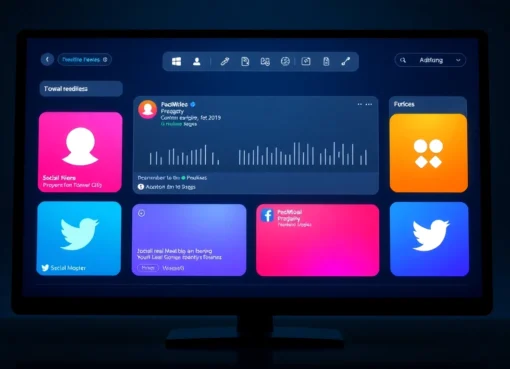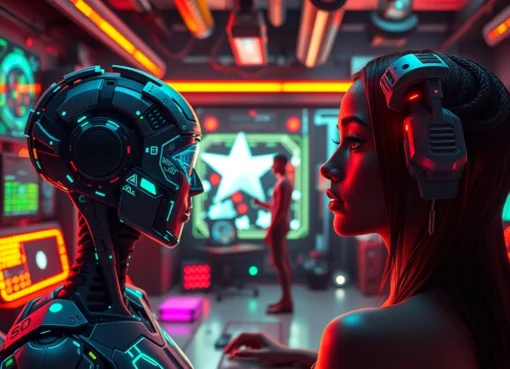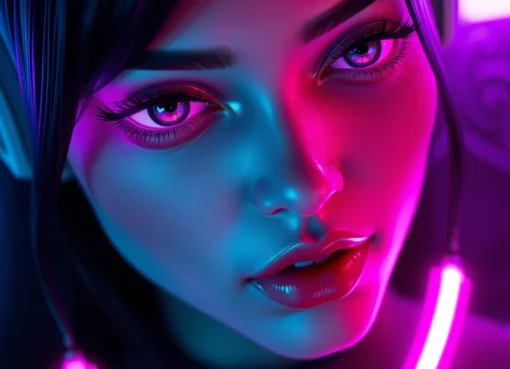Top 5 AI Image Generators with No Restrictions for Creative Freedom in 2025

Understanding the Rise of No-Restrictions AI Image Generators
Market demand for unrestricted creative tools
The rapid advancement of artificial intelligence has transformed the landscape of digital content creation, igniting a surge in demand for ai image generator no restrictions. This shift is fueled by creators seeking limitless artistic expression, unbound by traditional constraints and censorship protocols. The desire for unrestricted AI tools stems from the need to explore diverse visual styles—from provocative NSFW content to avant-garde experimental art—without restrictive filters impeding creativity. As digital communities grow and platforms embrace inclusivity, many users advocate for tools that prioritize artistic freedom while balancing responsibility and ethical considerations.
Furthermore, industries such as advertising, gaming, and virtual reality are increasingly employing AI for rapid prototyping and personalized content, which often require unrestricted generative capabilities to meet dynamic client demands. This market trajectory indicates a compelling shift towards open-ended AI platforms, enabling creators to develop more authentic, nuanced, and highly customized visual assets without external limitations.
Legal and ethical considerations in open AI generation
While the proliferation of no-restrictions AI image generators facilitates extraordinary creative opportunities, it also raises significant legal and ethical questions. Without proper regulation, the potential for misuse—including the creation of non-consensual explicit material, deepfake videos, and harmful content—increases substantially. Governments and organizations worldwide are grappling with establishing frameworks to mitigate risks without stifling innovation.
Many platforms implement robust guidelines and moderation tools; however, the balance between free creative expression and responsible content generation remains delicate. Ethical AI development emphasizes transparency, user accountability, and adherence to community standards, which are critical in preventing the dissemination of illegal or harmful visuals. Moreover, best practices suggest incorporating user authentication, content watermarking, and optional moderation filters, allowing users to navigate their creative workflows responsibly.
Understanding these boundaries is essential for developers and users alike—ensuring that AI remains a tool for positive and enriching experiences, rather than avenues for exploitation or harm.
How no-restriction platforms are changing digital art
The expansion of no-restrictions AI platforms has profoundly altered the paradigms of digital art creation. Artists and designers now access vast, flexible repositories of generative algorithms that produce highly personalized content—ranging from hyper-realistic portraits to surreal landscapes—instantaneously from text prompts or sketches.
This technological evolution democratizes art production, enabling individuals with limited technical skills to realize complex visual ideas. It also accelerates creative workflows by reducing reliance on traditional tools like Photoshop or manual illustration, allowing rapid iteration and experimentation. For instance, platforms such as Deep Dream Generator and CGDream.ai exemplify this trend, offering users the ability to produce professional-quality images without restrictions that typically hinder organic exploration of style or content.
Moreover, open AI tools foster innovation in storytelling, film, advertising, and virtual environments, making content more immersive and engaging. Artists often combine AI outputs with human curation, leading to hybrid art forms that challenge conventional aesthetics and expand artistic boundaries.
Key Features of the Best AI Image Generators with No Restrictions
Unlimited image generation and batch processing
Top-tier unrestricted AI platforms excel in offering unlimited image synthesis, empowering creators to generate massive volumes of images effortlessly. Batch processing capabilities enable users to produce hundreds or thousands of diverse creations simultaneously, which is invaluable for projects requiring rapid prototyping or extensive content libraries.
This scalability supports applications in marketing, where bulk image creation for campaigns or social media is essential, and in research, where large datasets facilitate experimental AI training. For example, Raphael AI is designed explicitly for speed and volume, creating high-quality visuals in seconds without session limits, thus revolutionizing productivity for professional creators.
Advanced customization and style options
Flexibility in artistic control distinguishes the most effective unrestricted AI generators. These tools offer extensive customization features, such as style transfer, detailed prompt engineering, and adjustable parameters like color palettes, lighting, and composition. They enable tailoring outputs to match specific aesthetic visions or project requirements.
For instance, platforms like Sugarlab and Dezgo provide users with fine-tuned control, simulating various artistic genres—from anime to photorealism—ensuring outputs align with precise creative objectives. This degree of flexibility ensures that generated visuals are not generic but genuinely reflective of the user’s intent.
Speed and ease of use for creators
Efficiency and user-friendliness are crucial in high-volume, unrestricted AI image generation. Modern platforms prioritize intuitive interfaces, step-by-step guidance, and quick rendering times to foster seamless workflows. Advanced AI models, combined with simplified input methods, help users produce complex visuals without requiring deep technical expertise.
For example, platforms like CGDream.ai and Articlereword have optimized their back-end architectures to minimize latency, delivering near-instant results. This accessibility encourages broader adoption among novice creators, marketers, and hobbyists, facilitating spontaneous artistic exploration.
Practical Applications of No-Restrictions AI Generators
Creating original art and design concepts
Unrestricted AI tools serve as invaluable collaborators for artists seeking to conceptualize novel ideas. By inputting descriptive prompts, creators can generate diverse visual variants that act as starting points for further refinement or as standalone art pieces. This streamlines the ideation phase, reducing time and resource expenditure.
For example, a designer working on branding can generate numerous logo ideas or visual motifs rapidly, enabling faster decision-making. Similarly, fine artists utilize these platforms to explore surreal compositions or fantastical themes, pushing the boundaries of traditional art forms.
Developing content for marketing and branding
Unrestricted AI visuals are increasingly integrated into digital marketing strategies. From creating eye-catching social media posts to designing elaborate campaign assets, these tools allow marketers to produce unique, tailored content at scale. The capacity to customize style and content fosters brand consistency while maintaining creative diversity.
Startups and established brands use platforms like Dezgo for rapid visual production, enabling campaigns to adapt swiftly to emerging trends. Additionally, generated images can be used for creating personalized advertising banners, product mockups, or influencer branding—all with a high degree of originality and flexibility.
Generating NSFW and adult-themed visuals ethically
One of the most debated yet demand-driven applications of no-restriction AI generators is adult content creation. While controversial, when ethically developed and responsibly used, these tools can serve legitimate creators and adult industries by producing personalized, consensual visuals without resorting to illegal or non-consensual material.
Platforms like InfluencersGoneWild.app exemplify this use case by enabling fictional, AI-generated influencers to interact with audiences or narrate adult-themed stories. These applications emphasize the importance of user verification, ethical boundaries, and clear community standards to prevent misuse, abuse, or non-consensual distribution.
Moreover, industry experts recommend integrating robust moderation tools and transparency, ensuring that AI-generated adult content is clearly labeled and used within legal jurisdictions to preserve societal ethical standards.
Comparison of Top No-Restrictions AI Image Platforms
Features, pricing, and accessibility analysis
When evaluating platforms, it is crucial to consider their core features, cost models, and user accessibility. For example, Raphael AI offers free, unlimited generation without registration, appealing to individual hobbyists and professional artists alike. Conversely, Dezgo combines affordability with advanced customization, supporting both simple and complex outputs.
Pricing structures vary—from free usage with optional premium features to subscription-based models providing enhanced capacities and dedicated support. Accessibility also hinges on platform usability, language support, and device compatibility, making it essential to select tools aligning with user skills and project needs.
Real user feedback and performance metrics
User reviews highlight the effectiveness, stability, and output quality of various platforms. Platforms like CGDream.ai, rated 4.9/5, showcase high satisfaction due to their speed and unrestricted capabilities. Common praise points include ease of use, detailed style control, and consistent performance during high-volume tasks.
Challenges such as occasional nonsensical outputs or the need for prompt adjustments are countered by active user communities and developer updates. Collecting performance metrics like generation time, image resolution, and output fidelity assists users in determining the optimal tool for their projects.
Technical support and community engagement
Effective technical support and thriving user communities enhance the adoption and mastery of AI generation tools. Platforms offering comprehensive documentation, tutorials, and responsive customer service accelerate onboarding, while forums and social groups facilitate knowledge sharing.
For instance, open-source and community-driven projects like Reddit’s AI art forums foster peer-to-peer learning, troubleshooting, and collaborative experimentation, advancing the field and helping users tackle complex challenges more effectively.
Implementing and Optimizing Your AI Image Generation Workflow
Best practices for prompt engineering
Crafting precise and descriptive prompts is fundamental to achieving desired AI-generated visuals. Effective prompt engineering involves understanding the nuances of language—using specific adjectives, nouns, and context to guide the AI toward the intended style or content.
For example, specifying lighting conditions (“soft morning light”), style references (“oil painting”), or emotional tone (“melancholic”) can significantly influence the output. Iterative refinement and utilization of prompt templates are recommended to optimize results continuously.
Managing copyright and ethical concerns
To responsibly leverage no-restriction AI tools, creators must stay aware of copyright laws and platform-specific usage rights. It is vital to treat AI-generated content as a derivative work and avoid infringing on existing intellectual property, particularly when combining AI outputs with copyrighted assets.
Implementing clear licensing policies, giving attribution when applicable, and avoiding the generation of illicit or non-consensual images uphold ethical standards. Users should also remain vigilant about the potential societal impact of their content and prioritize respectful, lawful creation practices.
Measuring output quality and iterative improvements
Continuous evaluation is key to mastering AI image generation. Metrics such as visual fidelity, stylistic accuracy, and relevance to the prompt guide iterative modifications. Utilizing comparison tools or human feedback can refine output quality over time.
Practices include adjusting prompt specificity, experimenting with different style parameters, and combining multiple AI outputs to create composite images. Monitoring these iterative cycles ensures the final visuals meet project standards and artistic expectations.


